Archive for the ‘fine_arts’ Category
Art in Copenhagen’s Meat Packing District
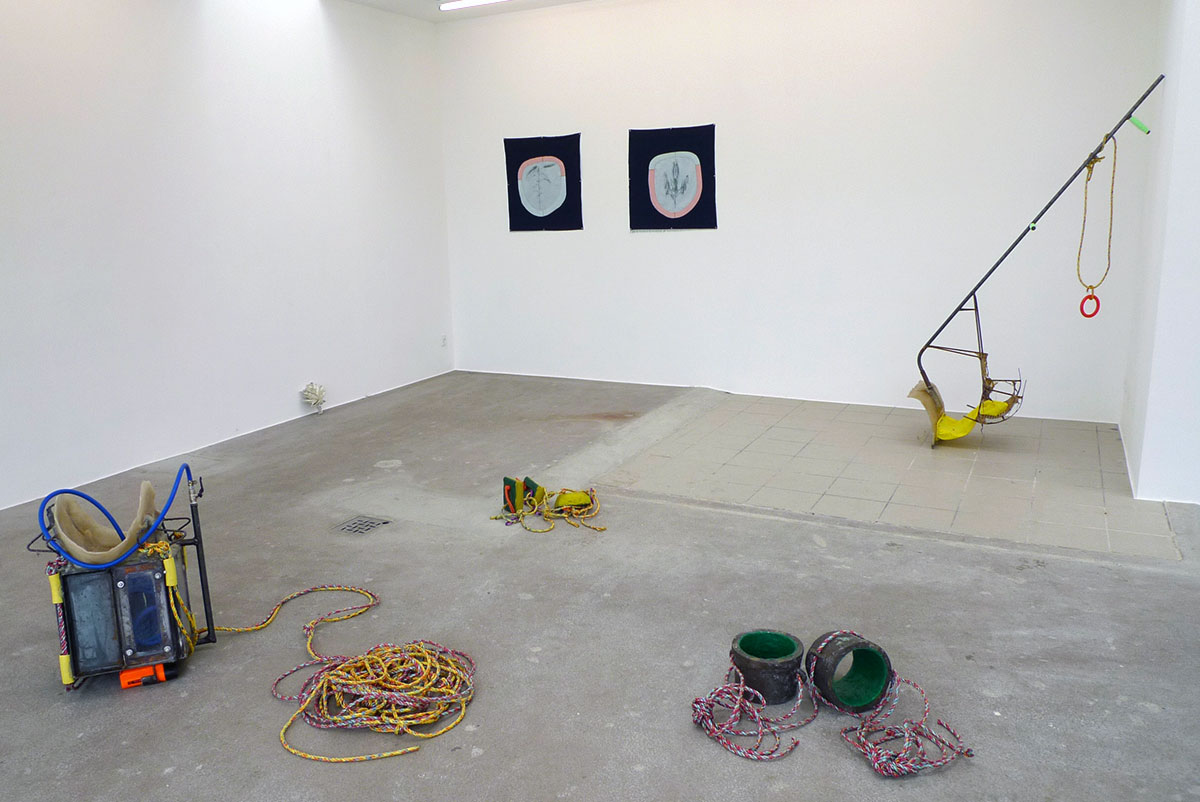
Sculptures by Emil Toldbod at Gether Contemporary
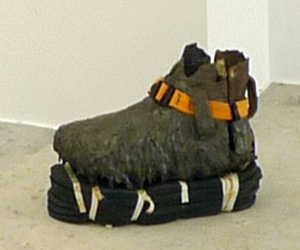 Gether Contemporary’s “Beneath the Surface” features the work of five young artists from the Royal Danish Academy of Fine Arts; Esben Gyldenløve, Oskar Jakobsen, Christine Overvad, Emil Toldbod and Nicky Sparre Ulrich. The only work that caught my imagination were the mixed-media sculptures by Emil Toldbod that comprise a series titled “Second Dive: Entering Another World”. Apparently the sculptures are employed in a film in which he wears and uses the sculptures to walk the surface of the sea digging through it’s ground. Below is what I imaging to be a test video in which he wears weighted boots to try and walk along the bottom of a swimming pool. The shoes in the video are pictured to the left.
Gether Contemporary’s “Beneath the Surface” features the work of five young artists from the Royal Danish Academy of Fine Arts; Esben Gyldenløve, Oskar Jakobsen, Christine Overvad, Emil Toldbod and Nicky Sparre Ulrich. The only work that caught my imagination were the mixed-media sculptures by Emil Toldbod that comprise a series titled “Second Dive: Entering Another World”. Apparently the sculptures are employed in a film in which he wears and uses the sculptures to walk the surface of the sea digging through it’s ground. Below is what I imaging to be a test video in which he wears weighted boots to try and walk along the bottom of a swimming pool. The shoes in the video are pictured to the left.
At the bottom left of the image is a helmet that Emil wears in his film and to the right is a shovel that he pushes along the sea’s bottom. To the right of the helmet, are concrete rings that he wears on his thighs and in the back concrete weights that he drags along to help him remain below the water surface. The sculptures immediately brought to mind the literary genre Speculative Fiction as the artist crafted survival tools from found objects to allow him to trove the bottom of the sea after the waters have risen over much of the continents. These are make-shift tools assembled and crafted by impoverished survivors of a not so distant future that will help them continue living from the debris of past civilization. As I know nothing about the film or “Second Dive: Entering Another World” other than seeing a few sculptures on view at Gether Contemporary and a still on the Gether site, I’m just making all this up in contemplating Emil Toldbod’s work.
1. Første skridt i min søgen efter det omvendt drejede sneglehus. from Emil Toldbod on Vimeo.
Above Gether Contemporary in Copenhagen’s Meat Packing district is Galleri Bo Bjeggard where I enjoyed the whimsical exhibition “Flowers for Poul” (PDF catalog for “Flowers of Poul”). “Flowers for Poul” celebrates the 90th birthday of deceased artist Poul Gernes by presenting the work of John Armleder, Cosima von Bonin, Paul Fagerskiold, Callum Innes, SUPERFLEX, Janaina Tscape and Eriwn Wurm as well as work by Poul Gernes. Flowers for Poul The exhibition is beautifully installed and visually engaging as large colorful works keep the viewer engaged from room to room. The works that stood out to me are SUPERFLEX’s “Information Machine” and “Commons Machine”. Although these pieces are simple and don’t function very well, particularly the make shift tops of “Information Machine” the pieces allow for simple interactivity that inanely reflect on our networked society.
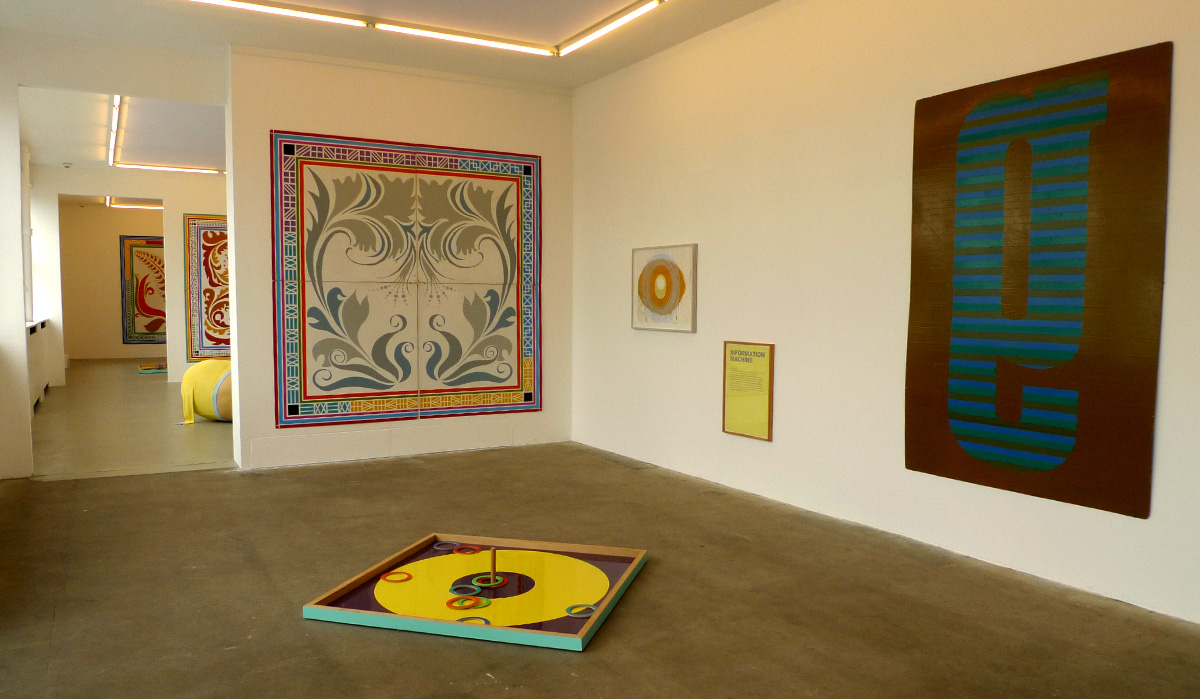
SUPERFLEX’S “INFORMATION MACHINE” “models the struggle between the desire to share information and the desire to contain information. Player A (represents the desire to share information) plays against Player B (represented by the pole in the middle) to choose between sharing information or containing information. The player with the most rings on the pole wins. If there are no rings on the pole the people do not have to choose between sharing information or containing information. The game is endless.” As described by SUPERFLEX, the players are our desire to share as well as contain information and their goal is to have us engage.
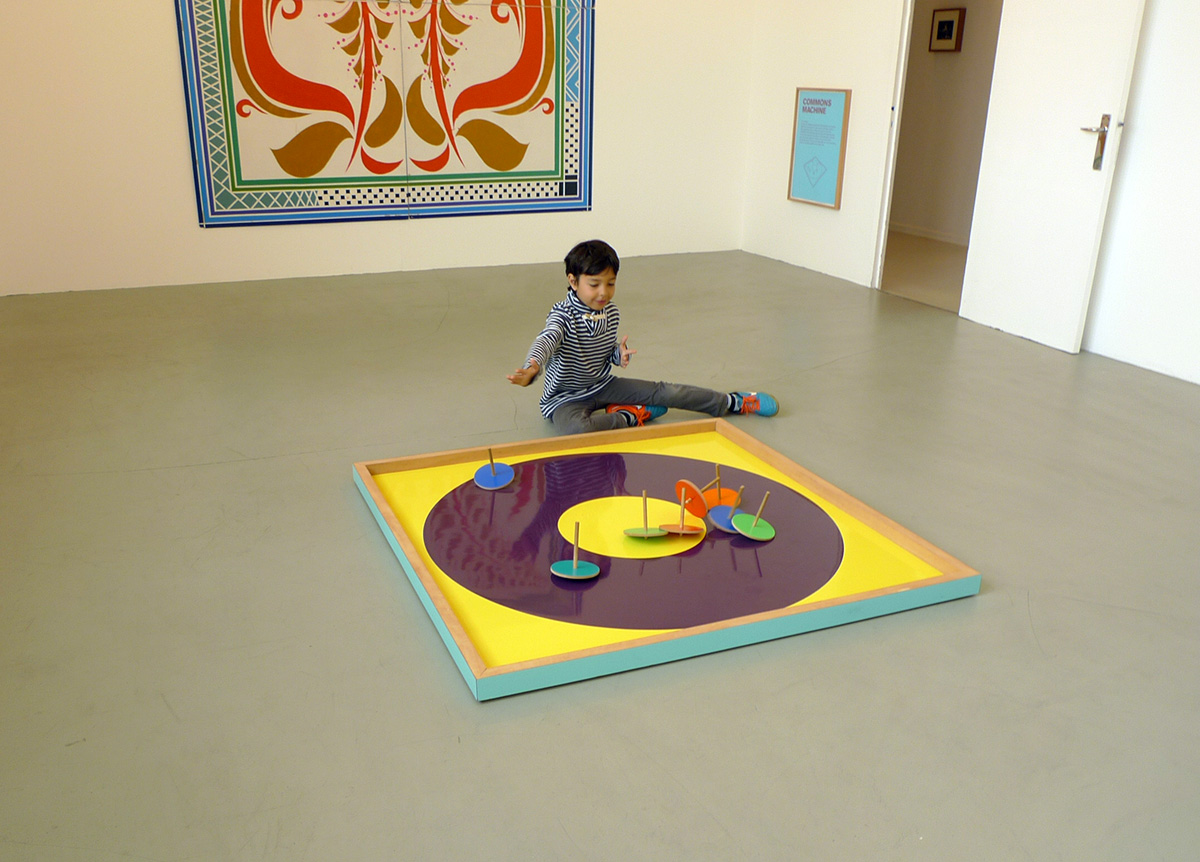
COMMONS MACHINE, I would enjoy a lot more if the tops actually worked. Built for 2-10 players acting as “software programmers are working together to develop an open-source system. The programmers are contributing by launching their SPINNING TOPs with open source codes (the spinning top). The source code must not end up in the proprietary domain area (the yellow area) but remain in the common area (the purple area). If any source code ends up in the proprietary area, the operating system is no longer free.” Unfortunately, the tops don’t really spin, it’s art.
From Bo Bjerggaard we walked over to V1 Contemporary Art Center which featured the art of two artists who began their careers as grafiti and tag artists in the Eighties – Barry McGee and Todd James. Their work is well documented and critiques, so I’m only including a few images more so for my own visual archive. I love Barry McGee’s patterns and the simplicity of Todd James’s fantasy drawings in his zine “Beyond the Gates” of viking-like warrior women.
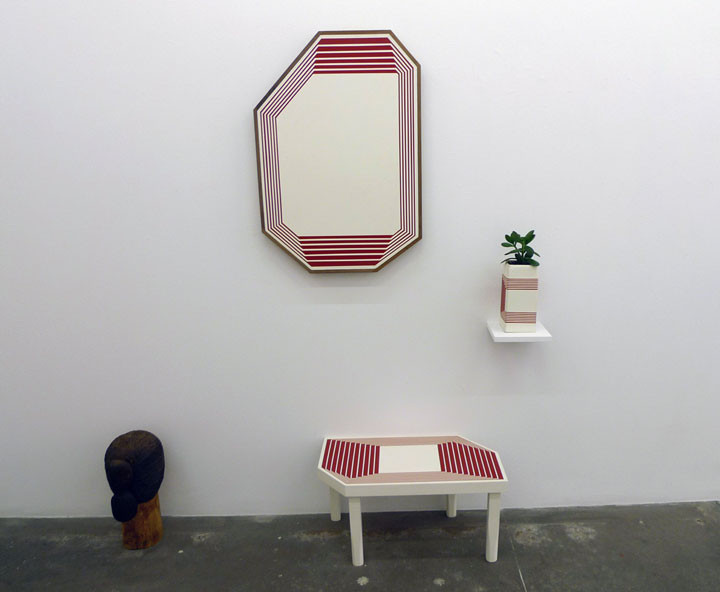
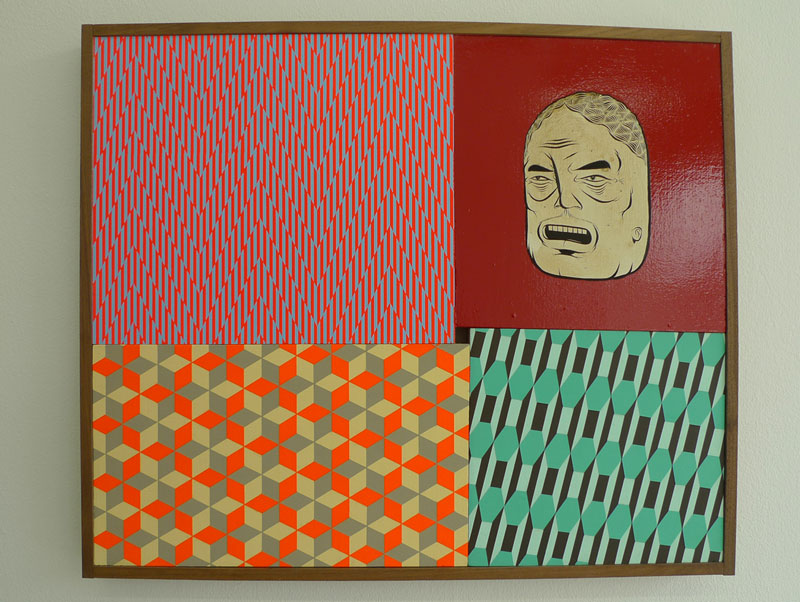
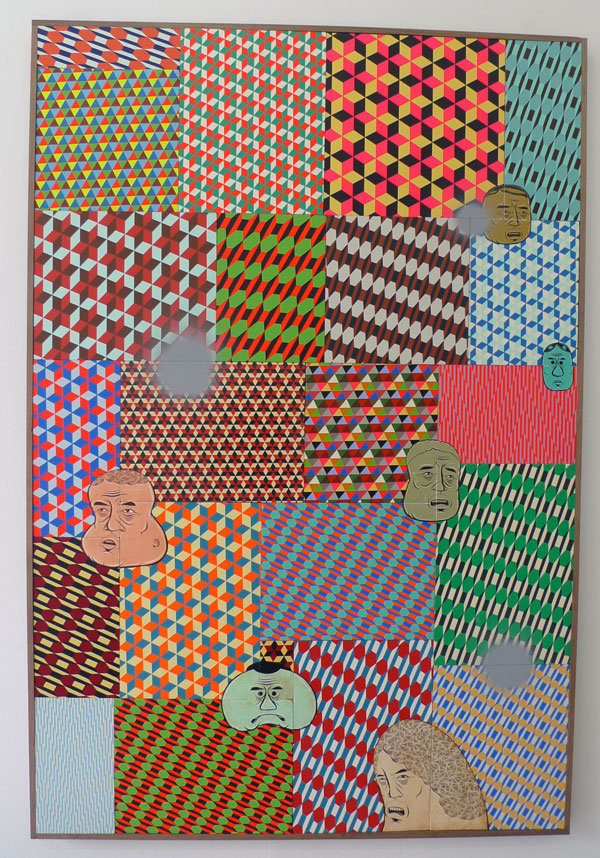
Todd James’s drawings are powerful in their printed comic format, I do not find the paintings at all interesting.
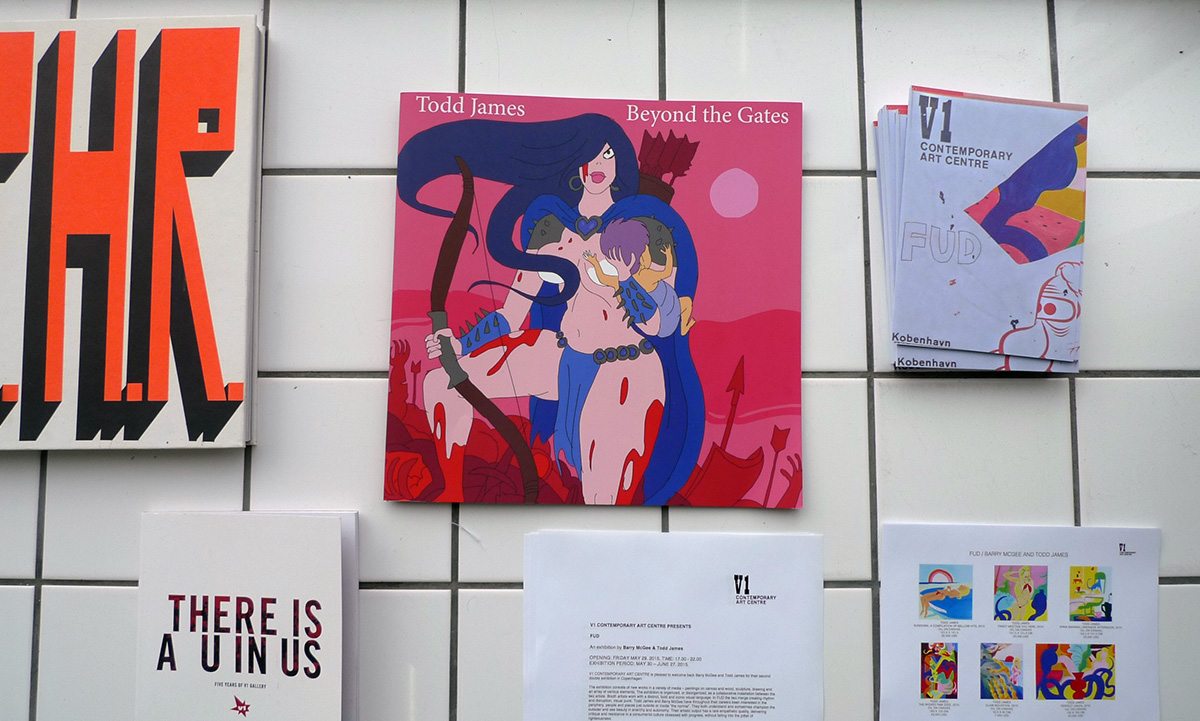
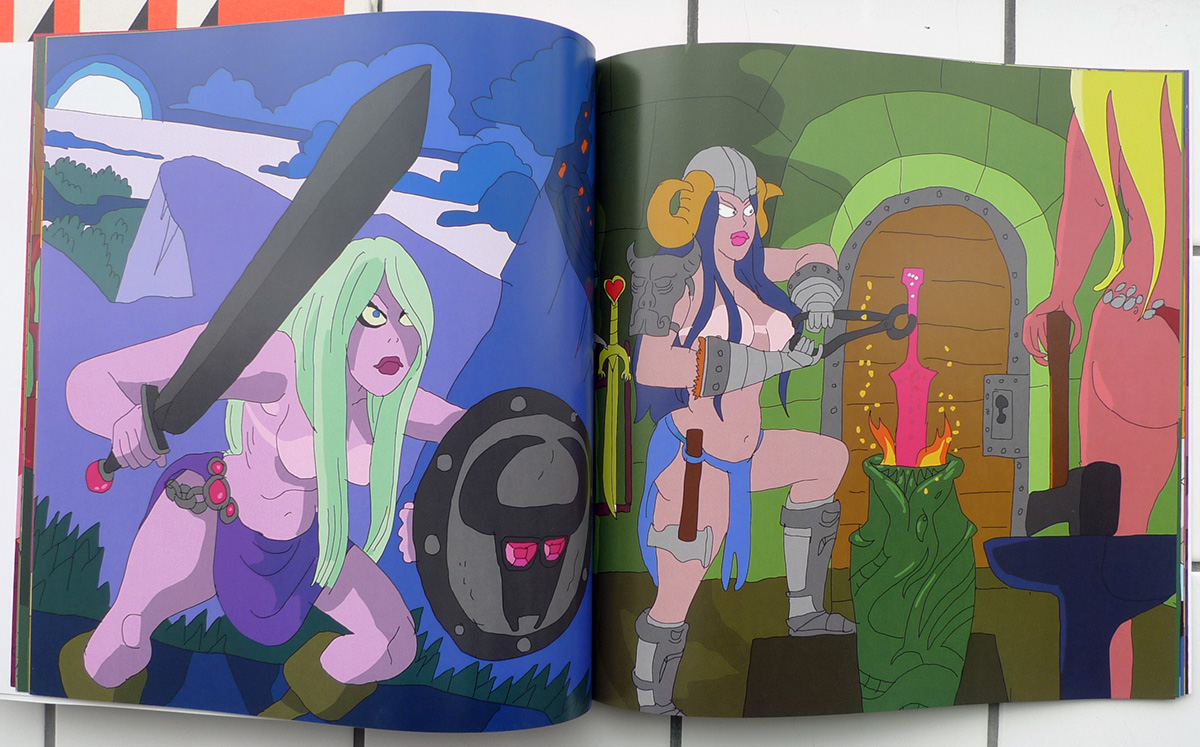
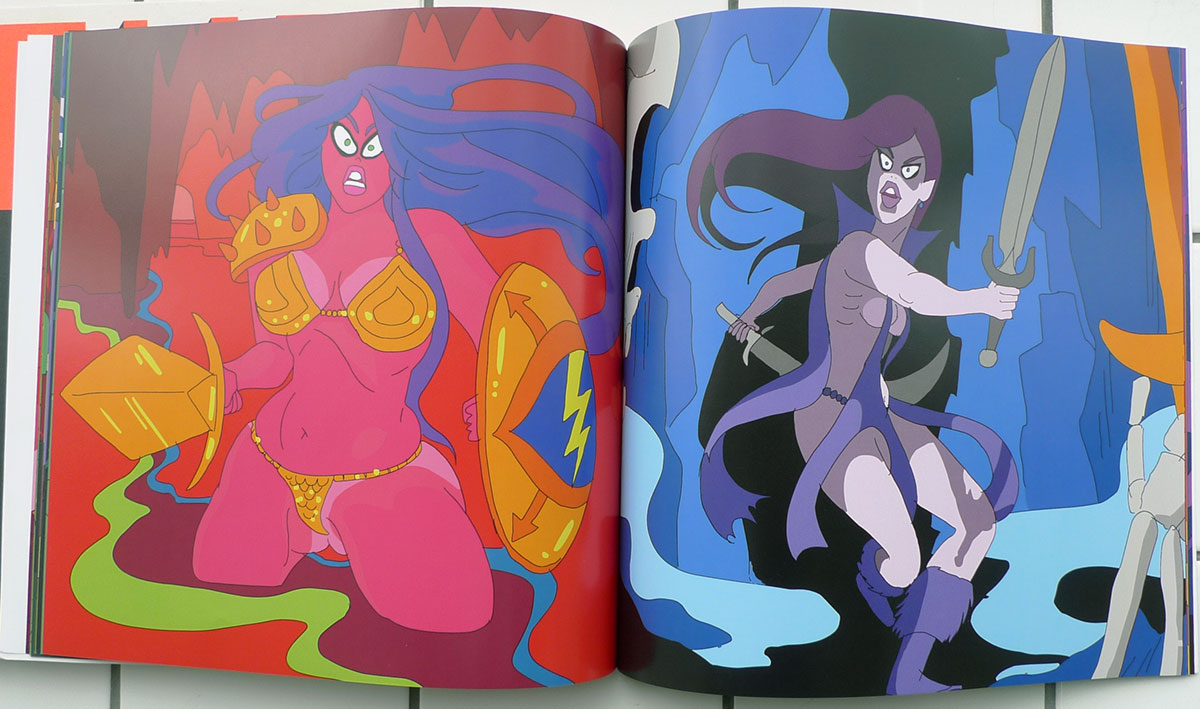
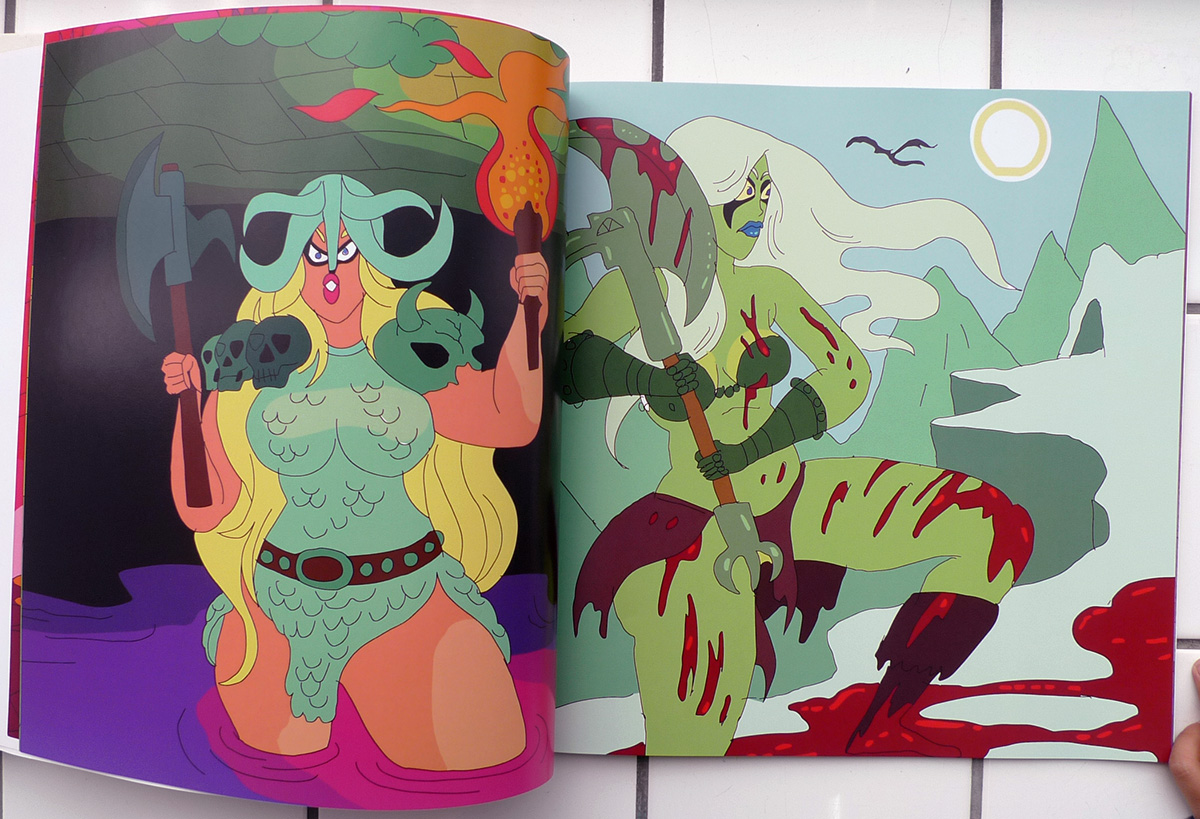
Boring…
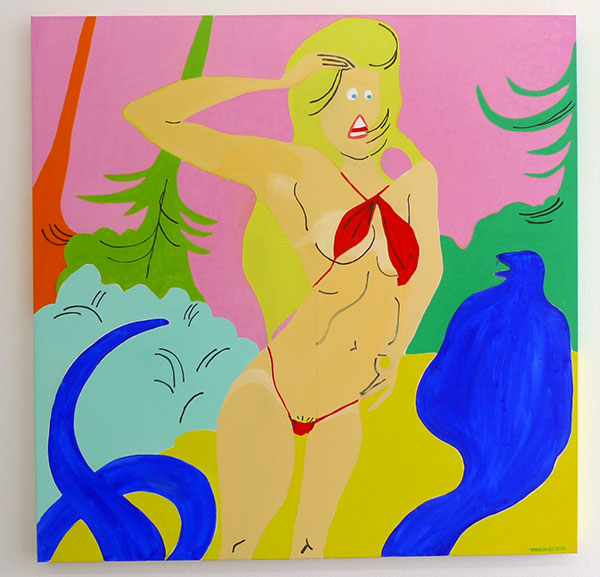
Galleri Specta in Copenhagen
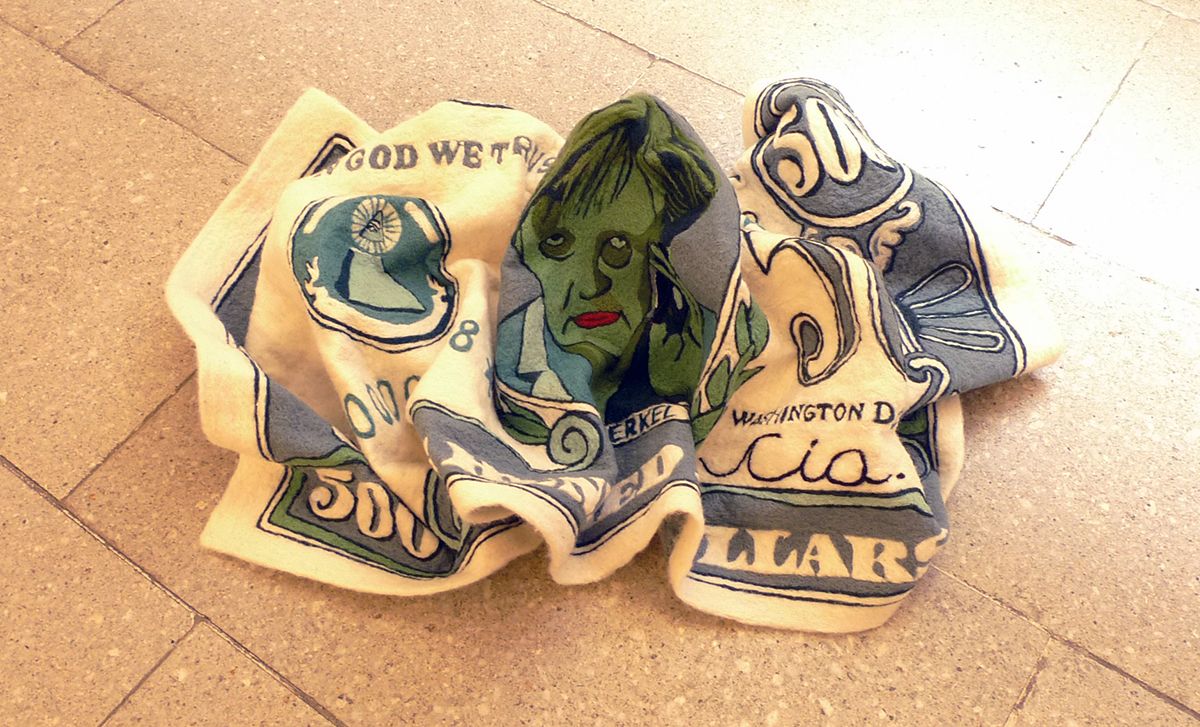
Crumpled $500 bill featuring Angela Merkel made from felt by artist Andreas Schulenberg
Today, my second day in Copenhagen, art work in the gallery Specta caught my eye while wandering about the city, so my son and I walked in. The gallerist immediately greeted us and even gave us a tour of the show (as a New Yorker, I was immediately taken aback). The woman explained that the exhibition titled “Money Makes the World Go Round” (May 9 – June 13, 2015) features four international artists that use money as the subject of their work. All of them with a critical bend toward the power of money and yet featured in a swank art market gallery, of course.

Money Makes the World Go Round II by Carlos Aires
The central piece upon walking in to the space is “Money Makes the World Go Round II”, by Spanish artist Carlos Aires who cuts iconographic silhouettes from the currency of the 30 wealthiest countries to create a sphere strewn with what appear to be fruit flies. The sphere is formed by pining the cutout silhouettes and flies to a white canvas surface.
Also by Carlos Aires are a grid of collages that cut news print figures into the country’s currency.
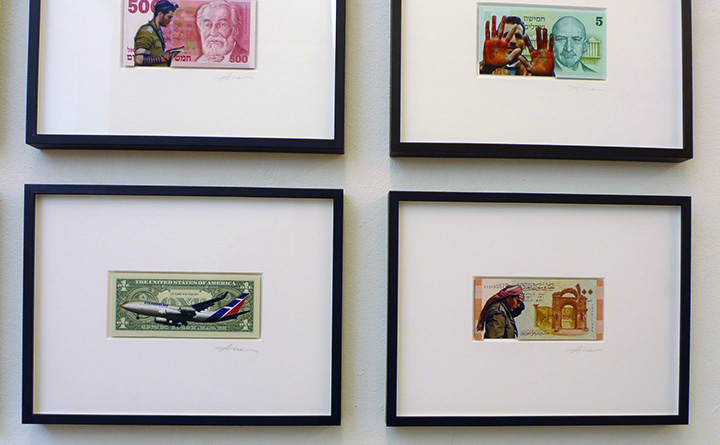
Money Collage by Carlos Aires
In his multi-tiled piece titled “Domino” Swedish artist Lars Arrhenius represents the flow of a piece of currency from an ATM withdrawal to any number of exchanges until it is redeposited in to a bank.
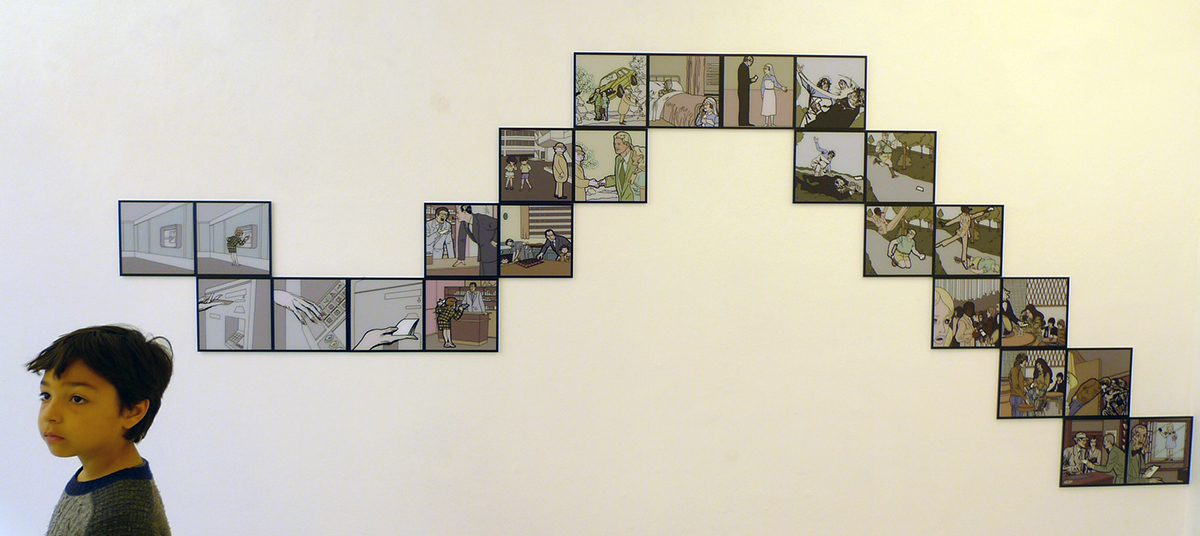
Domino by Lars Arrhenius
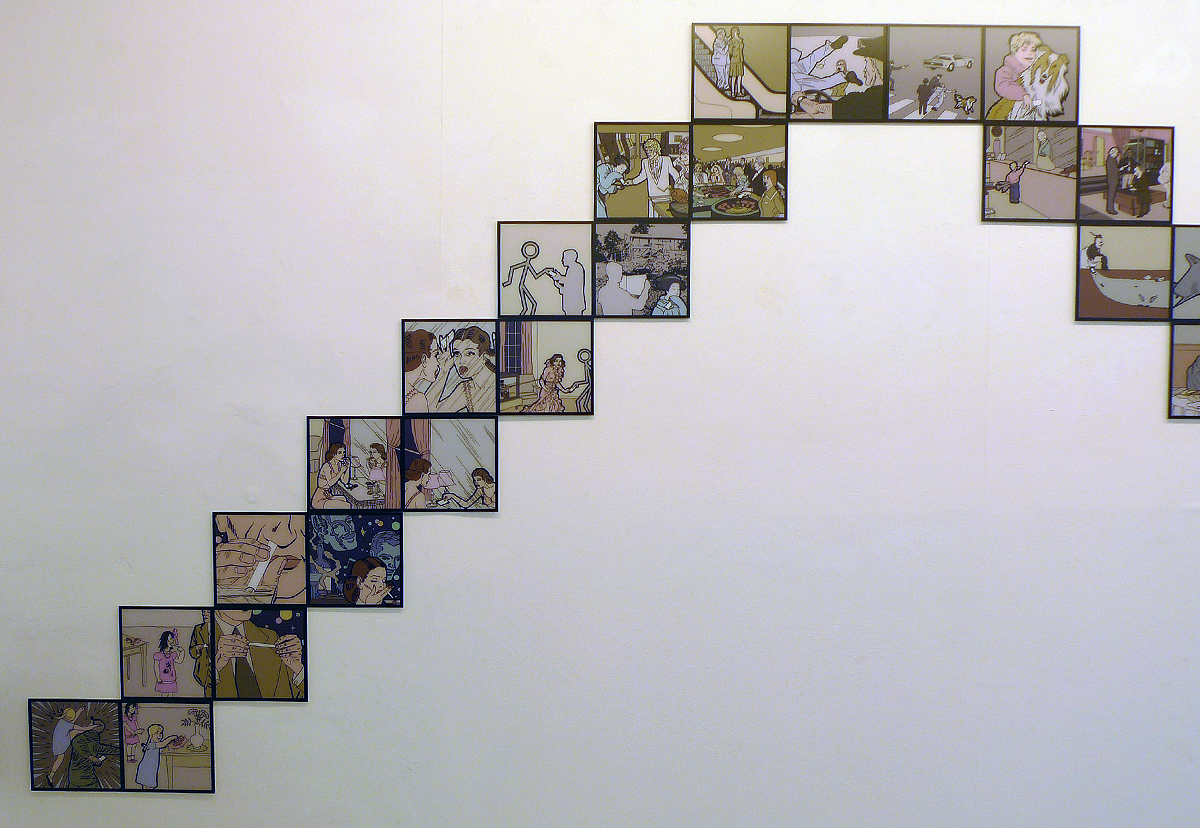
Domino by Lars Arrhenius
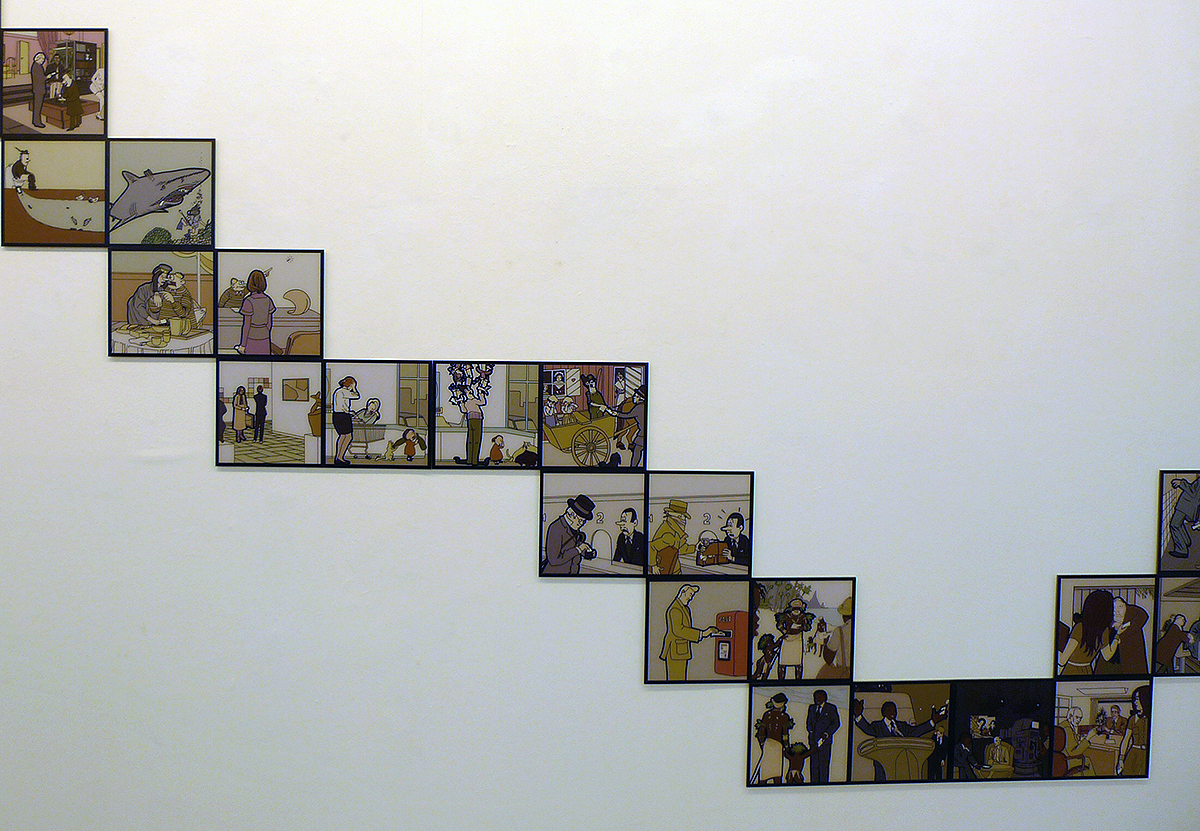
Domino by Lars Arrhenius
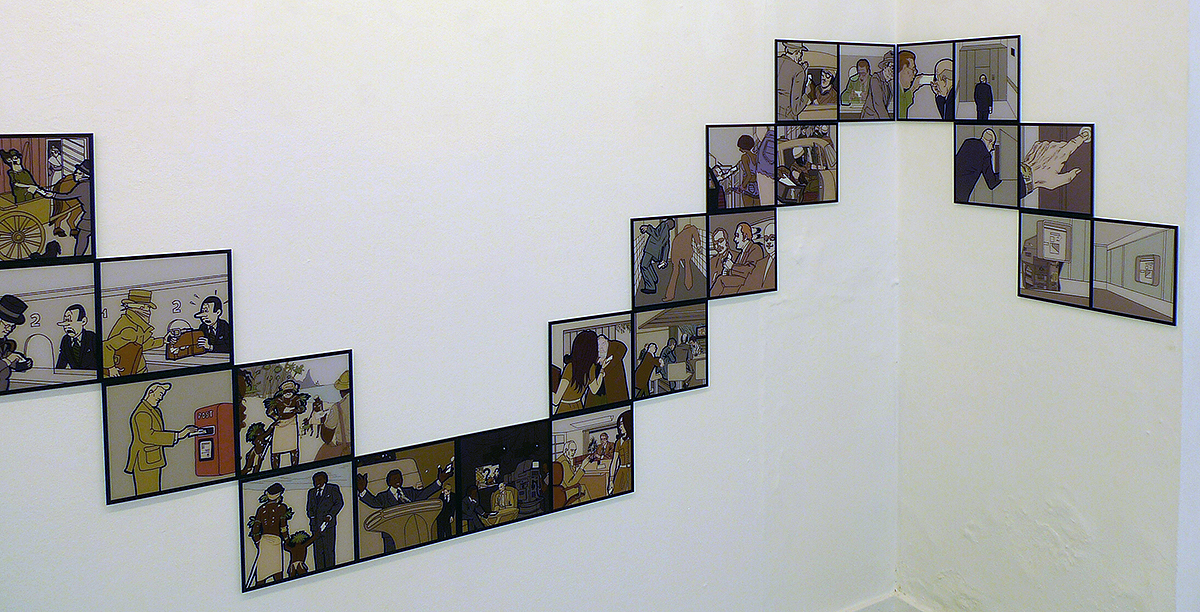
Domino by Lars Arrhenius
South African artist Frances Goodman has created bills from woven beads, beads once functioning as currency in various cultures. And in a separate series Goodman creates drawings from fake eyelashes.
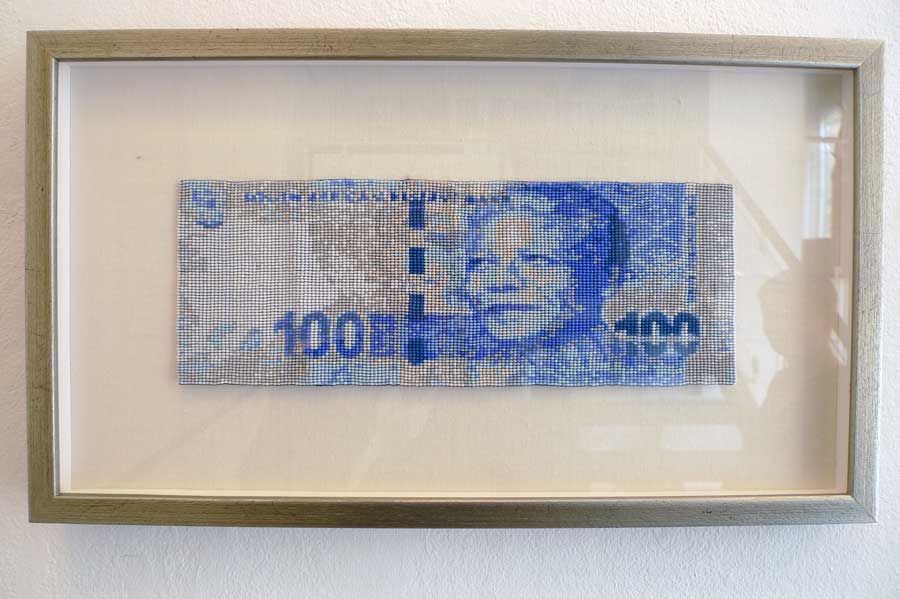
South African currency made from braided beads by Frances Goodman
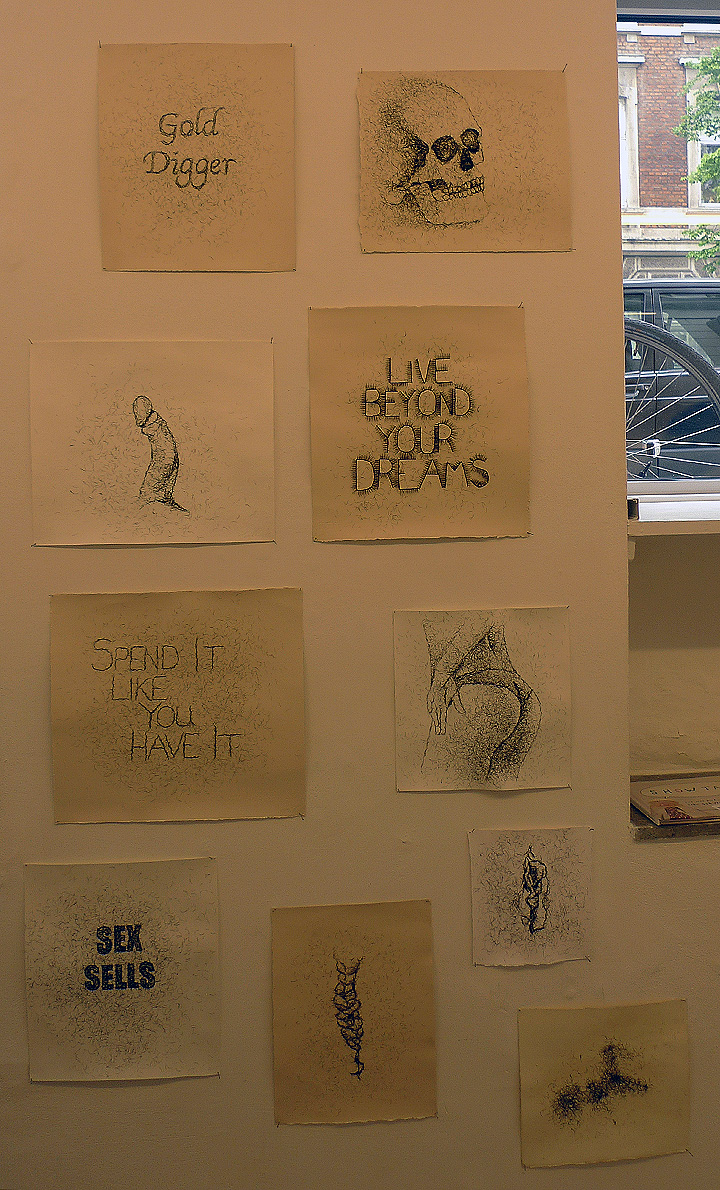
South African currency made from braided beads by Frances Goodman
My favorite and most striking work is by Danish/German artist Andreas Schulenberg who has created giant dollar bills from felt and in them replaced the portrait of a president with that of the “losers” in American society.
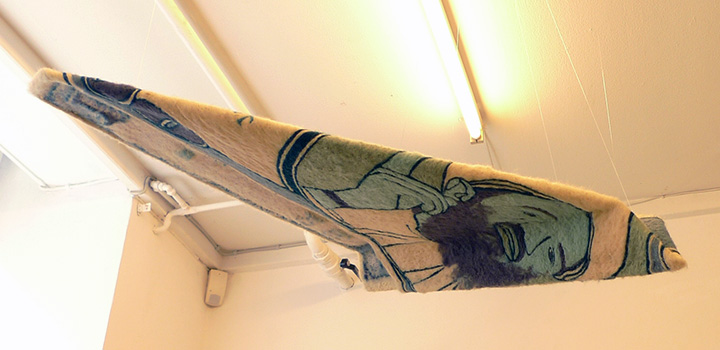
Paper airplane bill featuring Osama bin Laden made from felt by artist Andreas Schulenberg
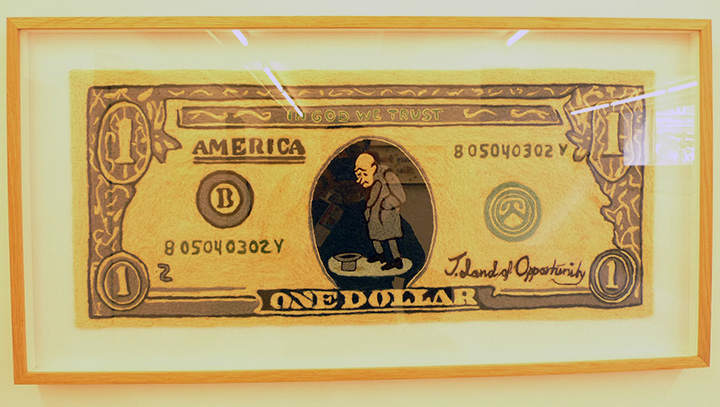
Dollar bill featuring poor man made in felt by artist Andreas Schulenberg
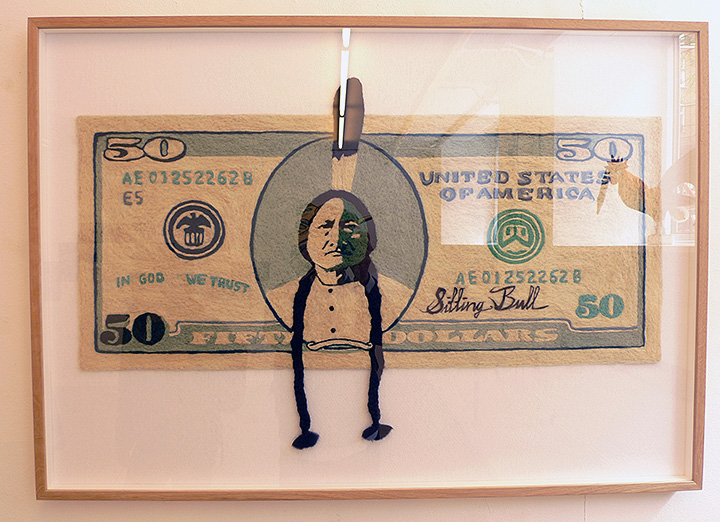
$50 dollar bill featuring Sitting Bull made in felt by artist Andreas Schulenberg
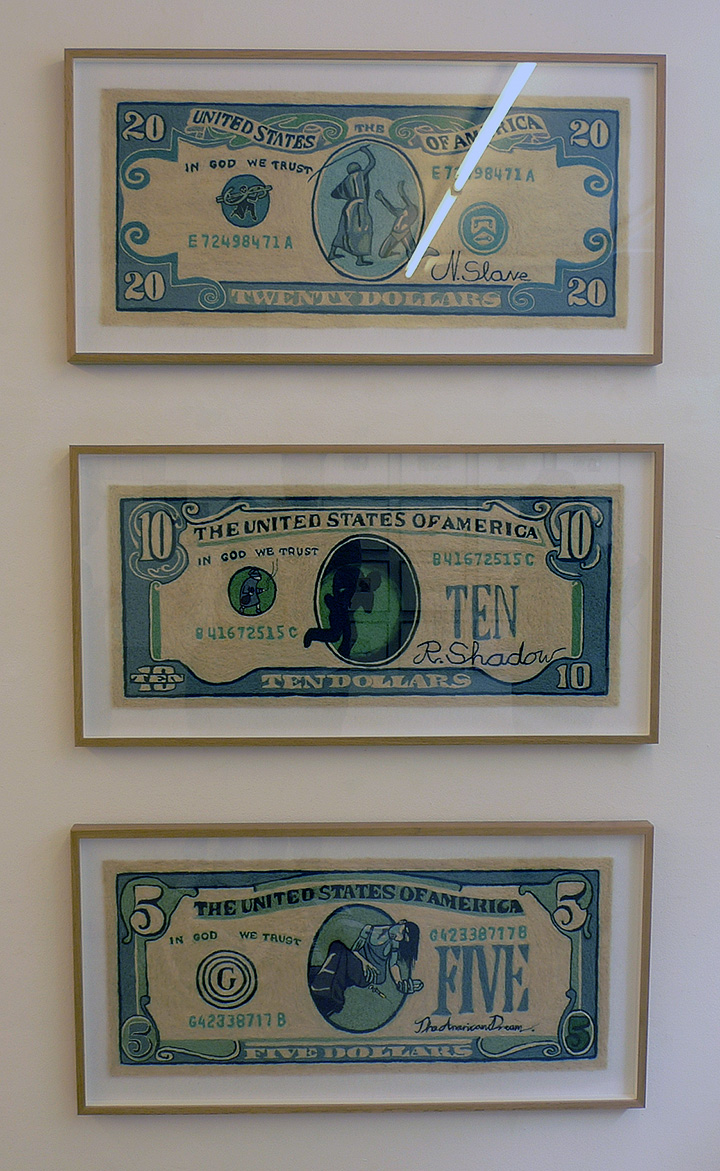
$20 – Slavery, $10 – Burglary, $5 – Drug Addiction bills made in felt by artist Andreas Schulenberg
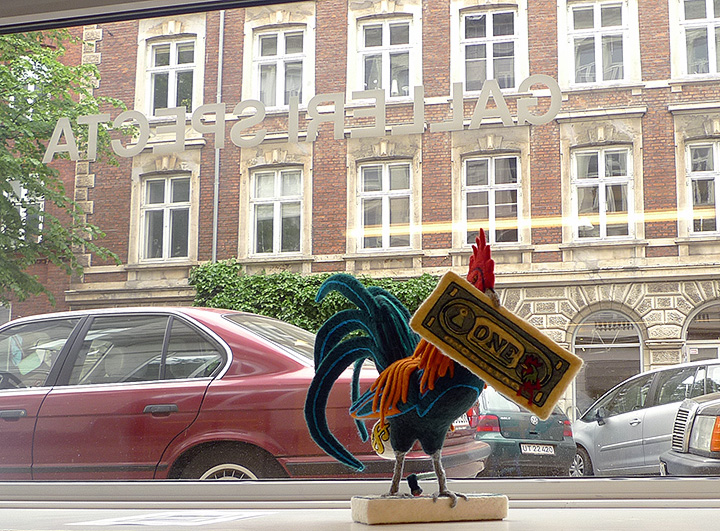
Felt chicken holding $1 bill while laying a money egg made in felt by artist Andreas Schulenberg
“Drifting in Daylight” at Harlem Meer
After getting lost in beautifully tucked away trails toward the north west corner of Central Park, the discovery of the S.S. Hangover made for successful end of art hunting in Central Park this past Saturday. The only one disappointed in our group of six art viewers was the 5 year old who had envisioned riding the boat along the lake as the music played. Fortunately the soft pleasant music performed from the boat by the brass sextet calmed our disillusioned interactive art connoisseur.
Upon studying the ship, my 6 year old immediately asked why there was a fat unicorn on the sail. A Creative Time attendant, corrected him that it was not a unicorn, but the winged horse, Pegasus from the myth of Hercules. To everyone’s disappointment, she went on to explain that the fat Pegasus represents the struggling artist who has gotten older and is unable to achieve artistic recognition and glory. I immediately wondered why the artist had to take a nice performative piece and stamp it with such a trite concept.
The boat appeared to circle around a small island as it performed a piece by Kjartan Sveinsson. We only remained for iterations that were relaxing and pleasant. As we continued to walk around the Harlem Meer, we encountered Karyn Olivier’s “Here and Now/Glacier, Shard, Rock” – a lenticular signboard that shifts between photographs of the immediate environment behind the billboard, a glacier and pottery shard that resembled a Western classical pottery work.
Upon exiting Harlem Meer and Central Park on the east side, we encountered Spencer Finch’s “Sunset (Central Park)” – a soft-serve ice cream truck that employs solar panels to cool and power the soft-swerve. The line for the free ice-cream was far too long for us to experience the solar-cooled ice cream.
Overall the work that we encountered was poetic and relaxing at a time when so much of the immediate social issues carry friction, stress and the growing schism between the rich and poor on our earth.
audiophile at RedLine’s “Press Play” Exhibition

audiophile (2001) The software presents remixes of the sounds of the city, from Managua, Nicaragua to Mexico City to Manhattan
My 2001 net.art project “audiophile” is on view as part of the exhibition titled “Press Play” curated by Ruth Bruno and Cortney Lane Stell. “Press Play” is collaboratively produced between RedLine and Denver Arts & Venues. The exhibition is on view at McNichols Civic Center Building 144 West Colfax (corner of West Colfax and Bannock) from March 21st through June 28th.
Curators Stell and Bruno describe the conceptual premise of the “Press Play”:
“Rules of games, like those found in video games, imply ethical models or boundaries to be kept within in daily societal interactions and experiences. These parameters often structure our actions, perspectives, and worldviews. The artists in Press Play use these normative tools as structure, starting points, or forces to push against in their work. While some artworks explore conventional modes of structured play, other works use ruled play systems in order to subvert these conventional models of participation and competition.”
Participating Artists: Mark Amerika, Molly Bounds, Brody Condon, Milton Croissant III, Humberto Duque, Joseph Farbrook, Miltos Manetas, Eva and Franco Mattes, Alex Myers, Chad Person, and Ricardo Miranda Zúñiga.
Notes on “The Fear of Art”
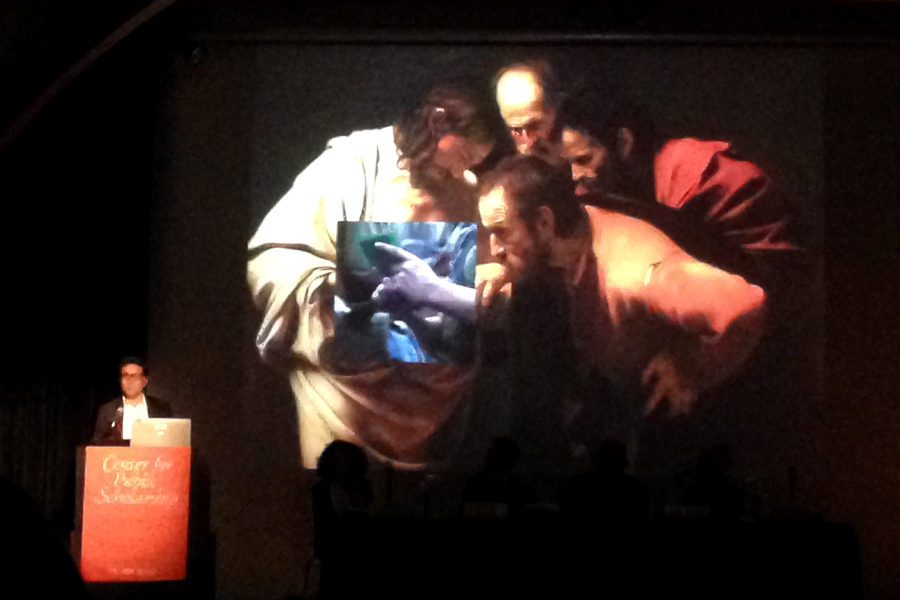
Jack Persekian – Caravaggio collaged with contemporary Palestinian reality.
Today, February 13th 2015, I attended the last two sessions of the New Schools “The Fear of Art” two-day conference. I have a few notes from the last panel.
Jeffrey Deitch: on mural of coffins with dollars by Blu… I’m sure that Jeffrey is familiar with the term “parachute artist”… why in this day and age would a museum and an artist create public work ignorant of the immediate community? It seems so unprofessional, disrespectful, naive, ignorant… inform oneself before creating a work, particularly a work destined for the public space. Some veterans protested against the white washing of the wall. They believed in what the mural portrayed – the union of money and war.
In the end a problematic image that created public outcry was short lived… It sounds like our mass media cycle – is this as art should function or the type of work and outcome that a museum desires? Deitch leaves it up to the artist, and that seems too easy. It is the makings for a lot of bad art getting a good run. What about the question of the maturity of the artist. By maturity, I mean an artist undertaking the responsibility to inform oneself, to talk with people, to do research and consider the nuances of a neat visual idea. If an artist informs herself and then proceeds with the work, great, but if an artist runs with a strong visual idea without carefully considering the meaning from various perspectives… then should this type of work be supported? Can research lead to self-sensorship?
Boris Groys: at museums pray to religious artifacts… always imagine what an ancient Egyptian or Greek or Aztec would feel or think if visiting a contemporary museum with these artifacts.
To offend people is a good thing to do because it provokes a reaction, it makes clear the attitude, it puts things on the table.
Lisa Phillips: the strongest art is disrespectful, problematic, because it’s a new way of seeing, a way of seeing that is disruptive and exists before entering the mainstream and being accepted.
Jack Persekian: Installation in preparation for the Pope’s visit to Palestine, images that merged Baroque art with current life of Palestinian’s… what we think of the Holy Land and what it means to live in the location… Carvaggio – Thomas asked to touch Jesus’s wounds – switched to identity card used to scan the finger print of Palestinian’s. The work turned out to be too confrontational to be presented to the pope.
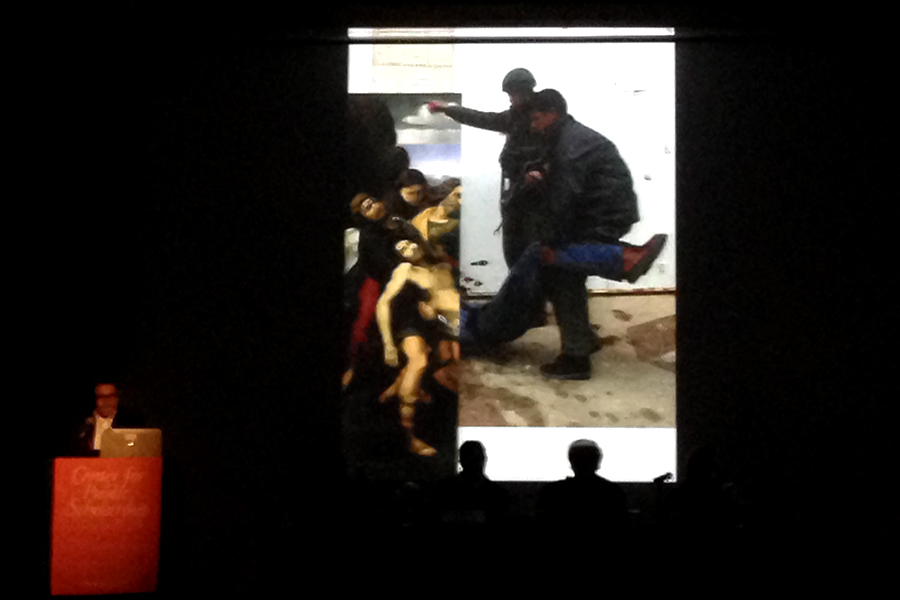
Jack Persekian – Baroque painting collaged with current Palestinian reality
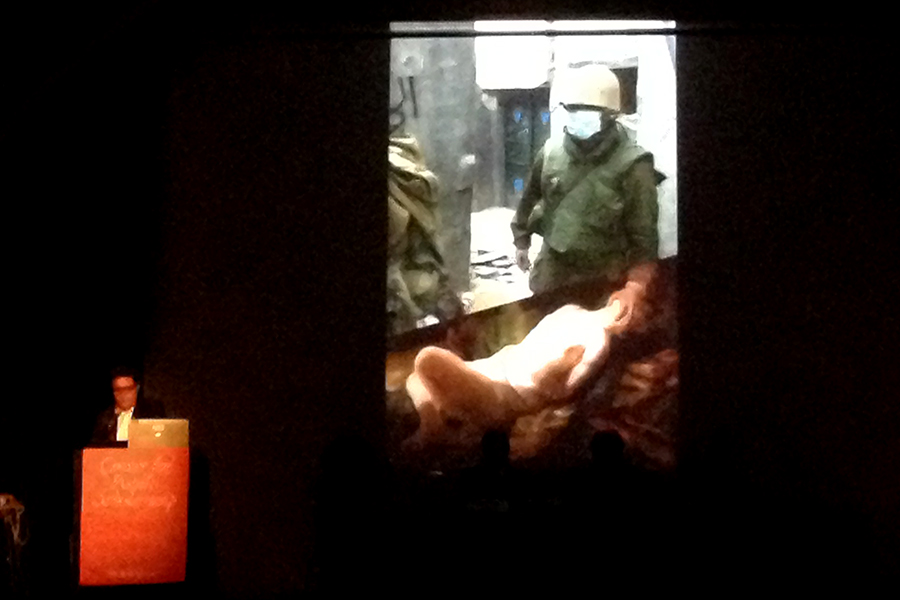
Jack Persekian – Baroque painting collaged with current Palestinian reality
“Universal Pictures” Roundtable at the Jewish Museum

Still from Lucy Raven’s “Curtains” (2014)
Tonight (1/22/15) I attended the Jewish Museum’s “Universal Pictures: Considering Contemporary Video Practice” – a roundtable discussion with artists Joan Jonas, Ken Okiishi, Lucy Raven and Jennifer West.
I was 30 minutes late and unfortunately missed Joan Jonas’s presentation.
I walked in at the end of Lucy Raven’s talk as she introduced the excerpt from her film “Curtains” (50 minutes, 2014). Raven traveled around the world to capture various post-production studios where films are processed into stereoscopic 3D films. The snippet itself appeared terribly boring to have to watch, but the conceptual basis is striking. In considering the use of sound, Raven remarked how, the 3D processing flattens the film to a moving hologram, whereas sound when using surround sound is much more immersive and physical and 3 dimensional. There was little time for question and answer, however, I would have liked to have heard Raven’s thoughts regarding the temporal reality of a given digital technical labor. Today these post production studios are getting tax breaks in major cities. As the tech becomes less specialized the labor will move to cheaper markets rather than major cities, I wondered how quickly these studios would dissolve. I would have liked to have heard her reflections regarding digital labor after having visited all these post production studios throughout the globe.
To Ken Okiishi, I have one suggestion – don’t put video in a PowerPoint presentation – doing so will keep your computer from crashing. The interactive paint ball installation was cool, but trite. And the painted screens seemed to be too much of a shtick, not very interesting as objects though momentarily engaging. I did like the parallel between these art objects and our use of smart phones with traces of greasy finger marks…
Jennifer West presented fascinating material, including a satirical 18th century illustration of people’s fascination with lenses. She discussed her practice of using recycled film, drawing from the magic lantern, interests in pre-cinema practices, the beauty of 70mm film. The use of flash light projections in her installations. And she ended with images or brainstorming around her ongoing project on film memory. Which lead me to consider what do I remember of a favorite film? The pieces that stand out? And to consider the psychological power of circulation & cinema upon a mass public.
The Jewish Museum should have allotted more time for this roundtable, I’m sure other people had questions, but they pressed how they had gone beyond the given time.
Nicolás Dumit Estévez Interviews Ricardo Miranda Zúñiga
 As part of the exhibition “PLAYING WITH FIRE: Political Interventions, Dissident Acts, and Mischievous Actions” at El Museo del Barrio several interviews were conducted with the artists concerning their practice. Below is the interview that the curator Nicolás Dumit Estévez conducted with me for the exhibition. The exhibition continues on view until February 7th.
As part of the exhibition “PLAYING WITH FIRE: Political Interventions, Dissident Acts, and Mischievous Actions” at El Museo del Barrio several interviews were conducted with the artists concerning their practice. Below is the interview that the curator Nicolás Dumit Estévez conducted with me for the exhibition. The exhibition continues on view until February 7th.
NDE: Can you talk about the use of firearms in On Transmitting Ideology?
RMZ: Through the amplification of mass media, ideological rhetoric is a powerful cultural weapon. I wanted to make as transparent as possible the power of ideological speech and its transmission through the media; mounting the radios on to the forms of AK47s and Uzis immediately triggers this link – the transmission of ideological speech is a political weapon.
NDE: I had the opportunity to see images of the performance of On Transmitting Ideology in Berlin, Germany. What were some of the reactions from passersby? My understanding is that people in the streets encountered you, as well as a small cadre of performers carrying wooden AK47s? How did you go about recruiting participants to your piece?
RMZ: The march was one act of a 24 hour sound performance titled “Moving Forest” that was commissioned for “transmediale.08: CONSPIRE…” an annual art and digital culture festival in Berlin. The performance and call for participants was circulated during the festival, so it was festival participants that volunteered to be part of the performance. The march of 20 participants was from Haus der Kulturen der Welt to the public park Siegessäule with a stop by the mayor’s home. My constant fear was that of authorities stoping us, but police merely looked at us with disinterest. Also most pedestrians merely paused to watch us, some asked what we were doing and when English speaking, we had them listen to the audio montage. People who did so, generally understood the work and were only surprised by the extremism spoken in the historically famous speeches.
NDE: There is a great deal of debate between those who advocate for guns and those who want to ban them . I am wondering how On Transmitting Ideology may or may not position itself in the context of this push and pull.
RMZ: The representation of the gun is to reflect the violent nature of ideology and if one is to listen to the audio montage, it capture extremism. I consider both violence and extremism as negative characteristics of society. The reading of the work that is most in line with my goal in creating the work is that we as a society need to move away from both weapons and ideological extremisms – political and religious.
NDE: What are your thoughts about the politization of aesthetics. It has come to my attention that, while it is fashionable to make “political” work, politics are not a hip subject in the art world?
RMZ: I have little interest in the art world. I’m much more interested in art that exists outside of the art world; art that engages people who are not seeking art and may function outside the gallery or museum. I’m interested in art that attempts to weave itself into the fiber of everyday culture while investigating, questioning and perhaps critiquing normative culture to stir self reflection. Much of the exchange in the art world is to decorate the homes of the wealthy or perhaps to serve as an investment for the wealthy. Perhaps for the art collector, investing in work that portrays current day politics is a bad long-term investment choice and not the best home decoration. If art world work is political, it needs to be sufficiently abstracted or undefined to function as a commodity object, so that any political potential has been muted.
NDE: Making political art work entails a big responsibility and a challenge as well. How can art that is politically-conscious live beyond the art world and effect change in society at large? And is this the role of the artist?
RMZ: This is a tough questions, because I don’t know how one would measure the effect of politically charged work upon others whom it may inspire to act. I believe that as long as the drive to create political art is sincere – that the artist is compelled to make political art due to first-hand experience of injustice, inequality, the misuse of power, it is not the role of the artist to effect change. The role of the artist is to capture and convey.
This interview is part of Crossfire, a project conceived and edited by Nicolás Dumit Estévez for El Museo del Barrio.
Neo Rauch at David Zwirner
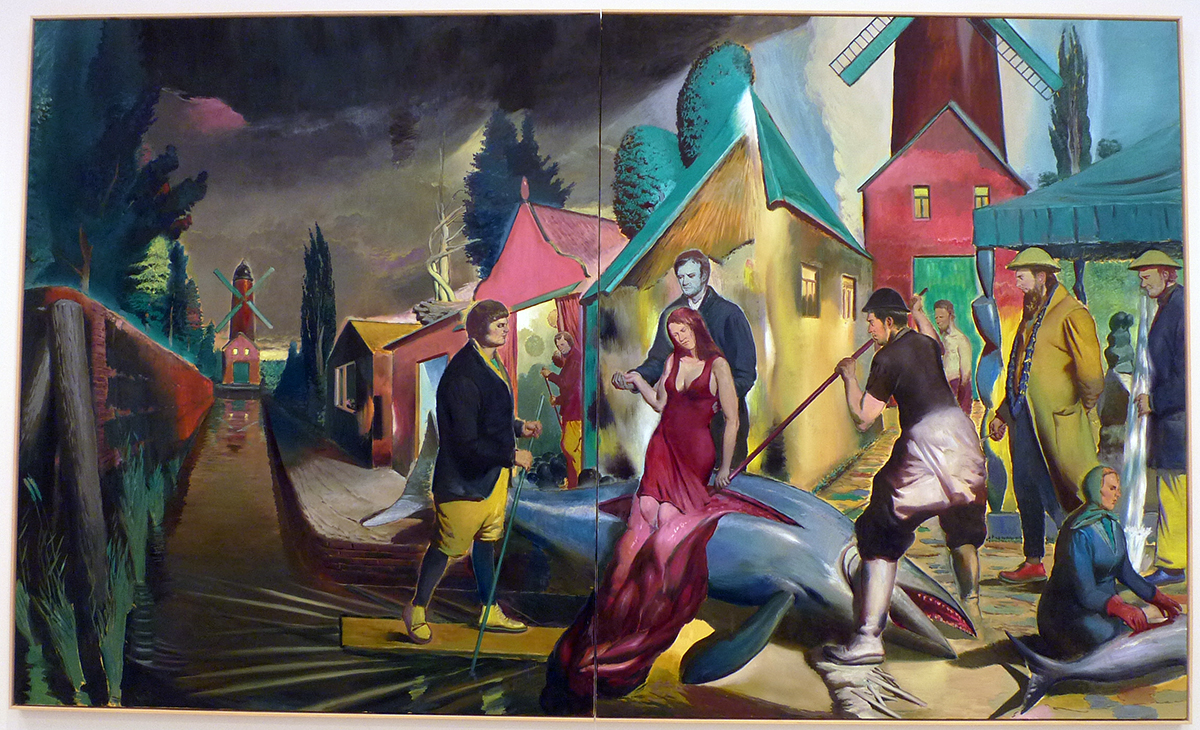
Neo Rauch 2014
Beyond the execution is the literary and metaphoric power of these paintings. The new works of Neo Rauch are amazing! Below is a selection of Neo Rauch current paintings at Zwirner.
g
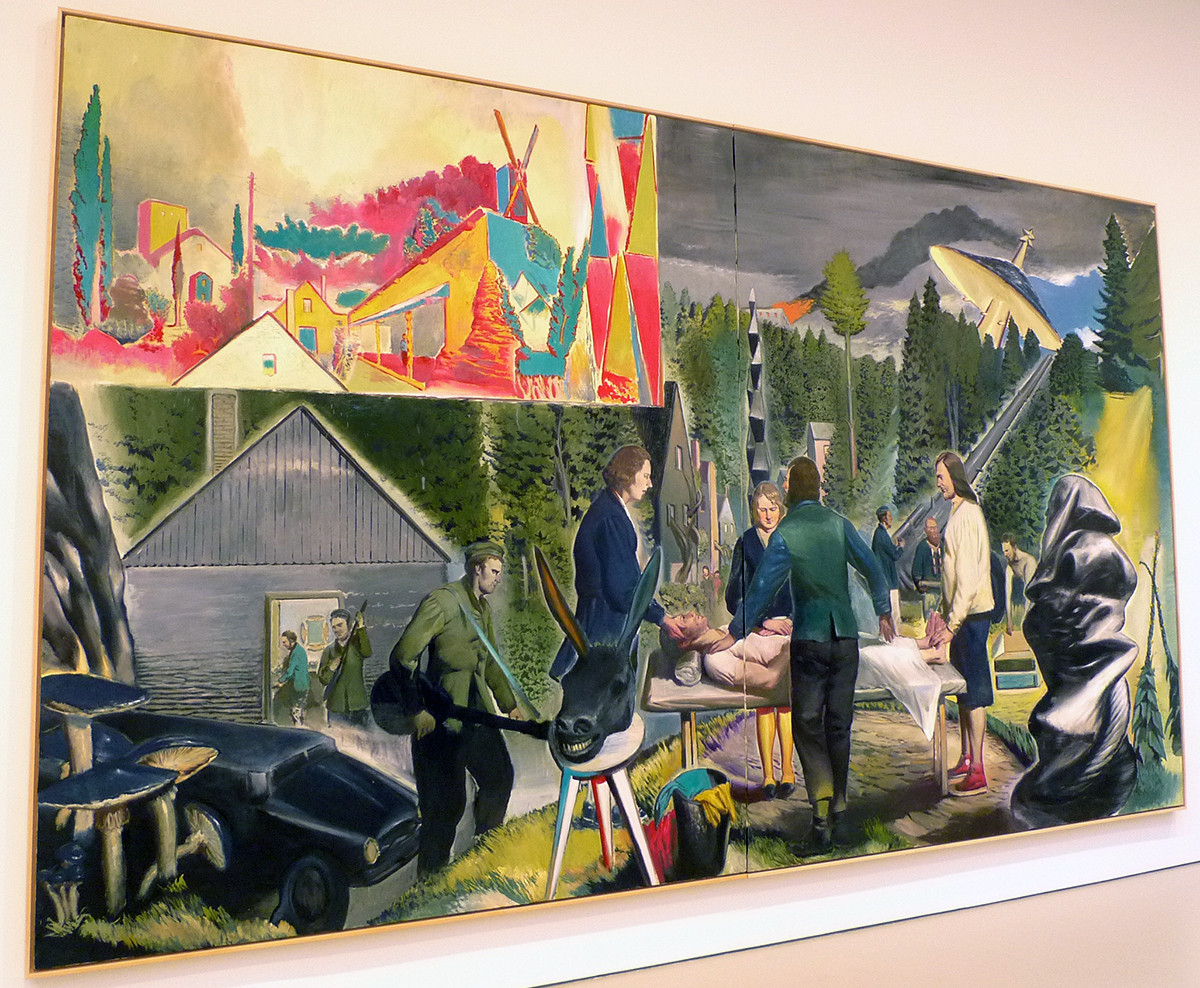
Neo Rauch 2014
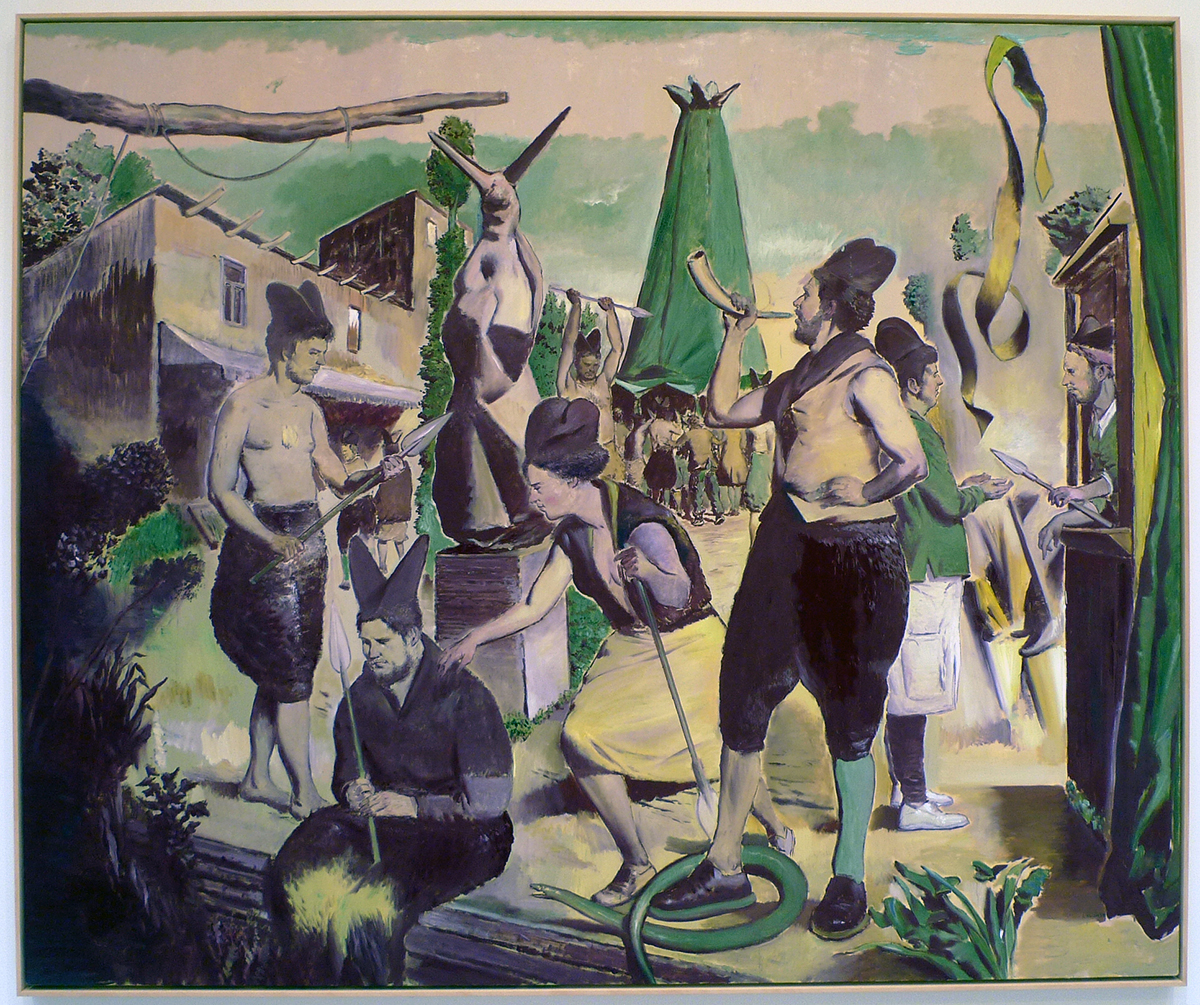
Neo Rauch 2014
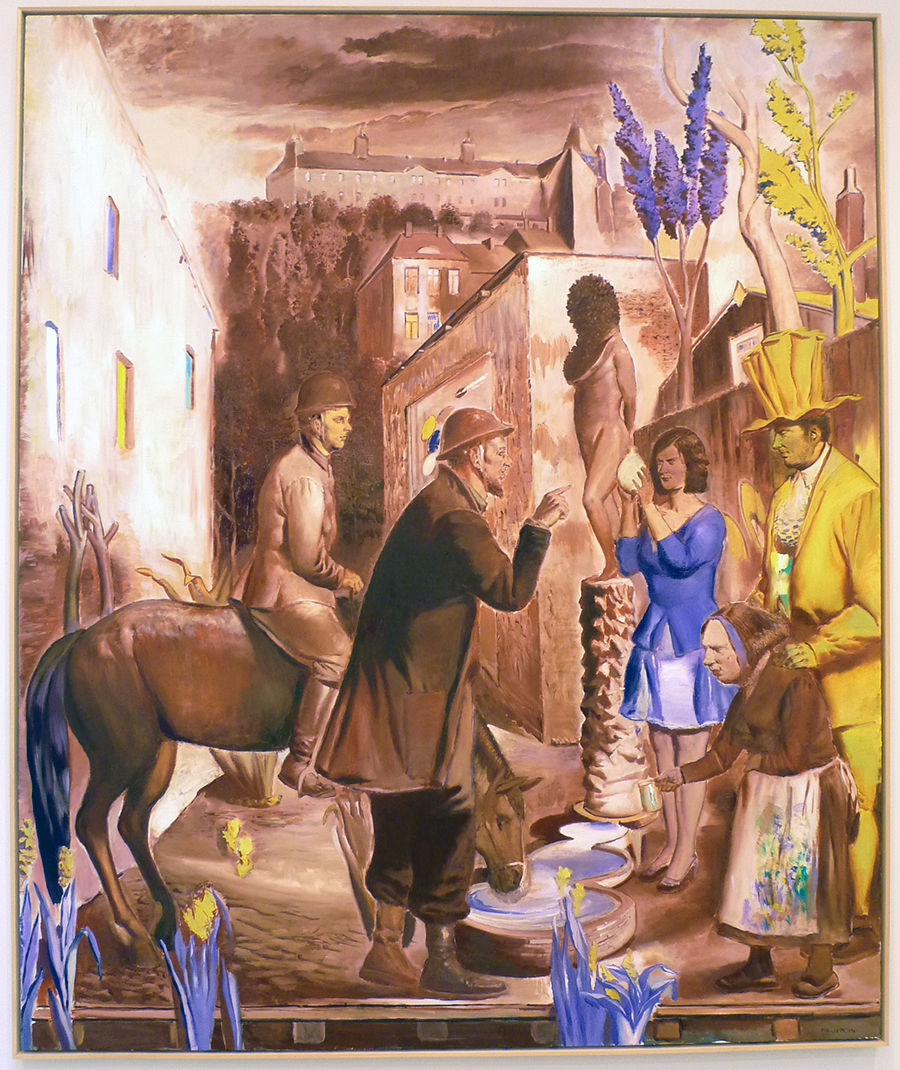
Neo Rauch 2014
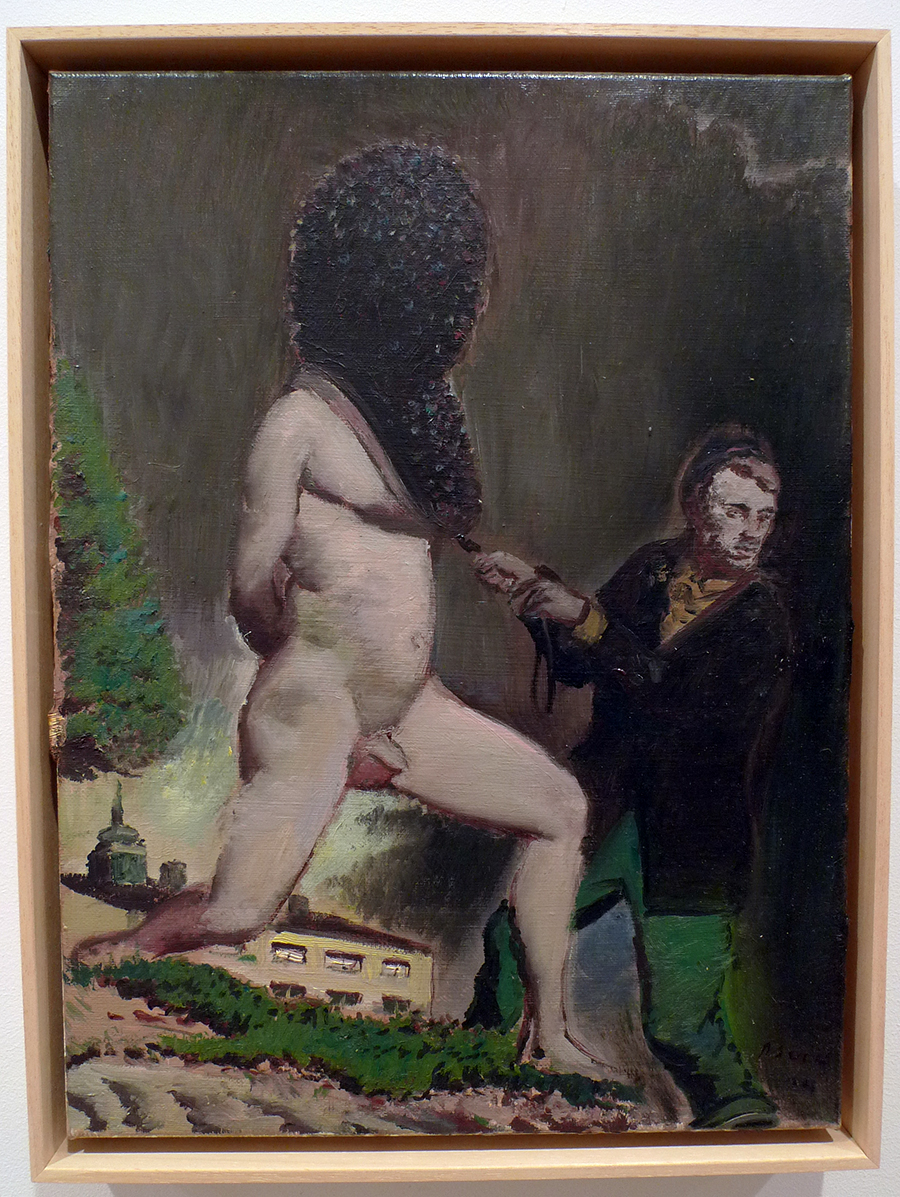
Neo Rauch 2014

Neo Rauch 2014

Neo Rauch 2014
LU YANG: ARCADE at wallplay
A week ago, I had the opportunity to see Lu Yang’s exhibition at wallplay in the Lower East Side. I was mesmerized by the work as it collapsed anime, gender politics and bioart. The exhibition consisted of incredibly detailed animations and prints, a video game, small 3D print sculptures of colorful monsters and photographs of a genderless individual dressed as an anime hero. The aesthetic is entirely informed by anime, at times extreme anime gore, but never for the sake of gore, the extreme laments lead one to question the essence of humanity in an era of increasing technological intervention.
The video game is presented in a traditional video game arcade with buttons (though only one works) and joystick by which the player controls a hero flying through a tunnel picking up red blood cells and staying away from cancer cells. The 3D printed sculptures consist of creatures from Lu Yang’s drawings and animations in physical form.
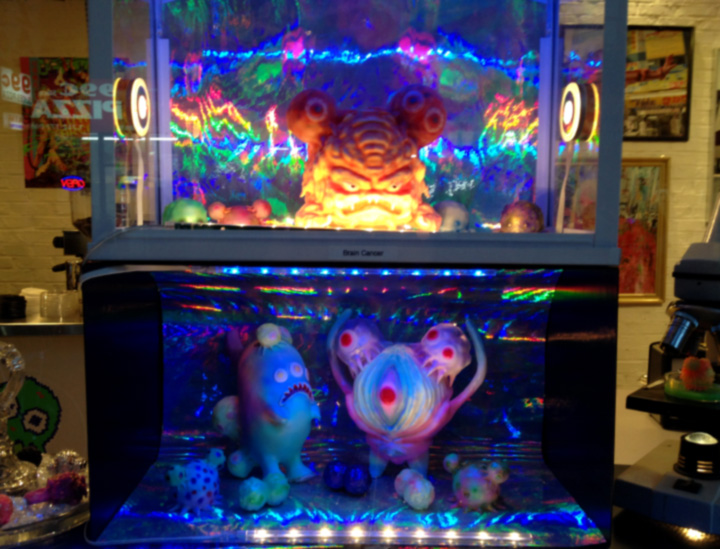
Reanimation!Underwater Zombie frog ballet!
Perhaps most striking are the photographs and videos of animatronic frog legs. Frogs commonly used for dissection are presented in a tank embedded with actuators to make the frog legs dance to the rhythm of music.
Reanimation!Underwater Zombie frog ballet! from LuYang.
Lu Yang’s work is provocative as she investigates the nature of the body and the union between human-made technology and the natural world. My one critique is that in some work the anime aesthetic overwhelms the work itself so that the content is muted by the language of anime.
Stop Motion Workshop with Robert Lyons

Animation Table
In mid-October, I attended a workshop titled “Experiencing Stop Motion with Robert Lyons” at Pratt and it was a great introduction to starting a stop motion studio on a tight budget.
The puppets were made from a range of materials such as : steel armature wire 9 gauge for 6-8 inch puppets that can be braided using a drill and vice for skeleton, Super Sculpey for flesh, Pro-Poxy for hard sections that will be drilled into such as the feet and to help support the puppets – Matthews Microgrip painted in chroma key green.

Animation Puppets
And for the stop motion production, Robert presented the following equipment:
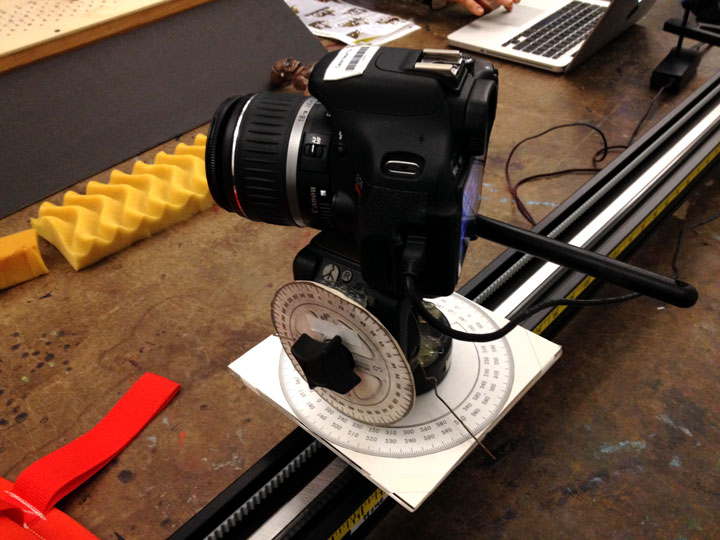
Canon T3i Rebel
Camera: Canon T3i Rebel, EOS HD
Motion Control: DitoGear OmniSlider track which costs $2916 which includes the DragonBridge pictured below to control movement of the slider from the software.
Software: Dragonframe Stop Motion
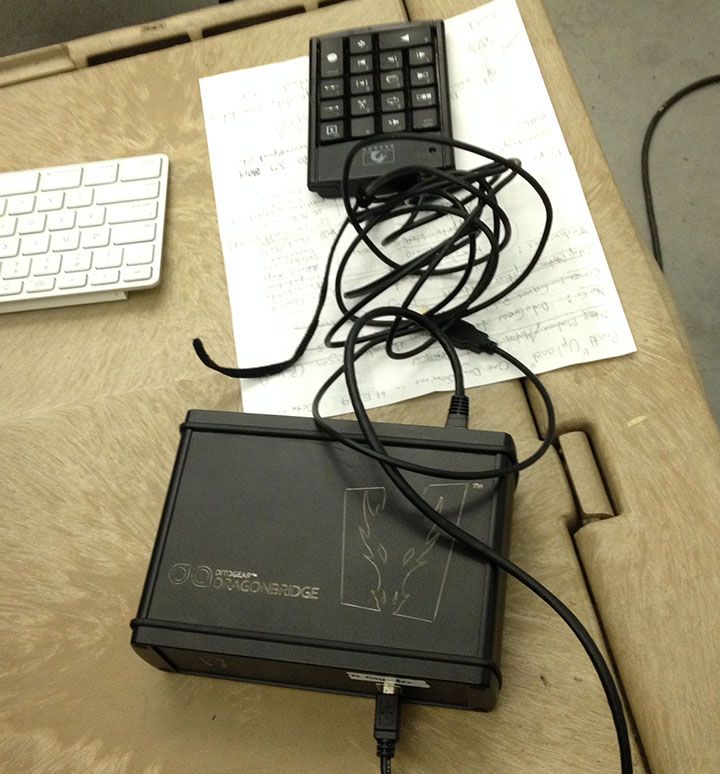
Dragon Bridge Controller
In the studio, a traditional head mount is used for the camera with customized protractor to measure the degrees of rotation. A great addition to the studio would be the DitoGear™ OmniHead at $2,721.89
Above the table mounted to the ceiling is a light grid.
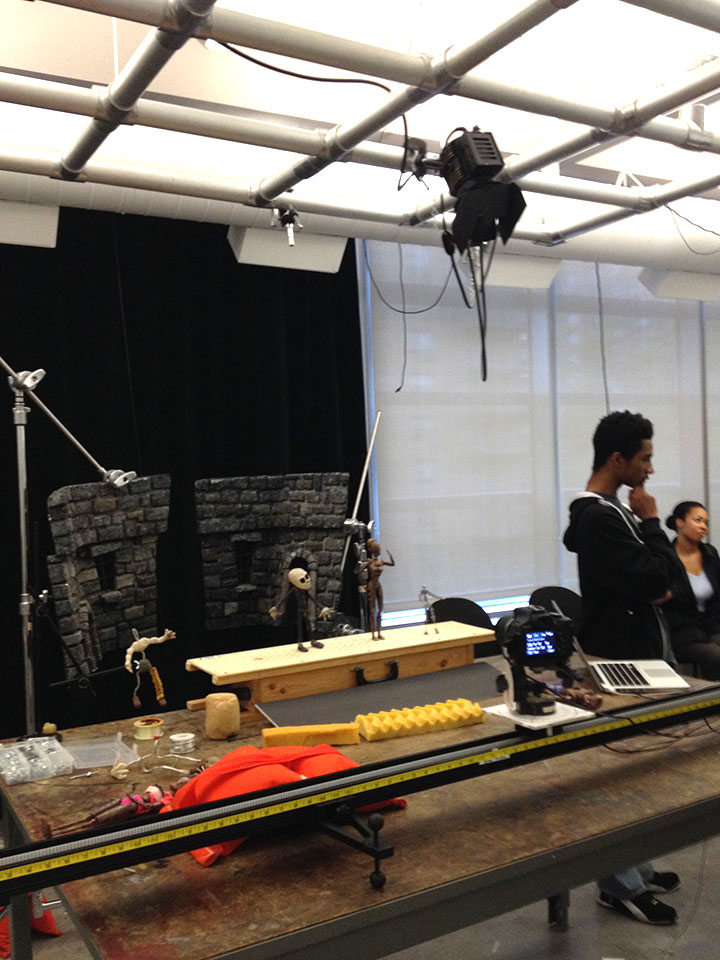
Light Grid